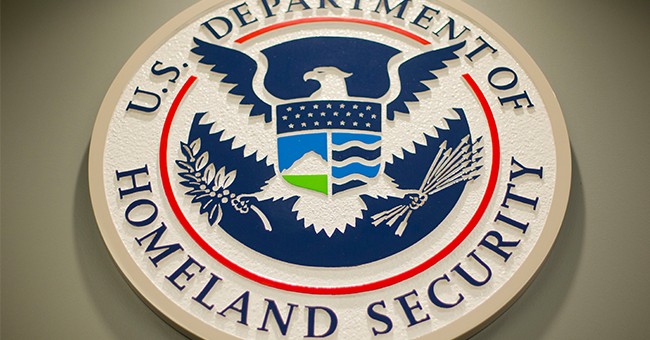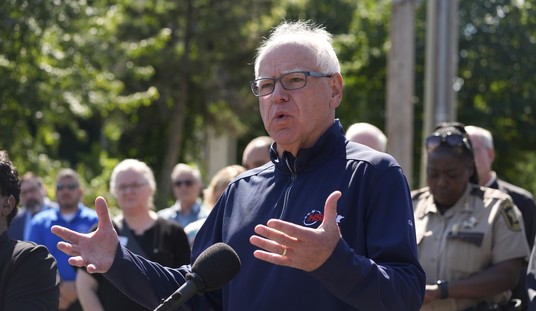
Recent research from the U.S. Department of Homeland Security (DHS) indicates the coronavirus is susceptible to heat, humidity, and direct sunlight, which means as summer comes, the virus should weaken.
This research directly refutes claims made by a variety of climate alarmists in recent weeks that the coronavirus and similar infectious diseases and pandemics are likely to be made worse, and more common, due to climate change.
Business Insider recently published an op-ed titled, “Climate Change is Only Going to Make Health Crises Like Coronavirus More Frequent and Worse.” Not to be outdone, The Hill published an op-ed by Vinod Thomas, former direct-general and senior vice president of the Independent Evaluation Group at the World Bank Group, an organization that has prevented critical energy projects in poor developing countries in order to fight climate change. Thomas wrote, “[t]here is a link to pandemics, like COVID-19, and a warmer world, coupled with human encroachment into wildlife habitats, and greater possibilities of animal-to-human virus transmissions.”
Piling falsehood upon falsehood, World Health Organization (WHO) researcher Arthur Wyns authored an article in Scientific American falsely claiming climate change may “make the effects of a current or future pandemic worse.” Wyns’ article is classic misdirection, trying to get people to ignore WHO’s role in allowing the coronavirus to spread—claiming there was no human to human transmission and fighting countries efforts to ban travel from China—by blaming the disease on the climate crisis bugaboo.
History and overwhelming scientific evidence shows a warmer climate reduces the likelihood and severity of epidemics and pandemics.
Indeed, chapter seven of the Non-governmental International Panel on Climate Change’s report of Climate Change Reconsidered: Biological Impacts details dozens of peer-reviewed studies showing premature deaths from illness and disease are far more prevalent during colder seasons and colder climate eras than during warmer seasons and warmer climate eras. For instance, pandemics, including the bubonic plague and yellow fever, wreaked havoc during cold periods like the little ice age and waned during periods like the medieval warm period.
Now, research from DHS confirms the link between cold weather and disease. DHS research shows sunlight, heat, and humidity should diminish the coronavirus, meaning as more people head outdoors during the long summer days, and heat and humidity rises, the prevalence of COVID-19 should fade.
During President Donald Trump’s daily coronavirus briefing on April 23, William Bryan, acting head of DHS’s Science and Technology Directorate, discussed the department’s findings that the half-life of the coronavirus, in the absence of sunlight, decreases, from 18 hours when the temperature is 70 to 75 degrees to only one hour at a temperature of 95 degrees and as humidity increases from 20 percent to 80 percent. Direct sunlight, reduces the virus’s half-life from six hours to just two minutes at temperatures of 70 to 75 degrees and humidity of 80 percent.
DHS’s findings reinforce the conclusions of National Institutes of Health research, which found influenza, “is more infectious in cold winter temperatures than during the warmer months. At winter temperatures, the virus’s outer covering, or envelope, hardens to a rubbery gel that could shield the virus as it passes from person to person … At warmer temperatures, however, the protective gel melts to a liquid phase. But this liquid phase apparently isn’t tough enough to protect the virus against the elements, and so the virus loses its ability to spread from person to person.”
Aside from the likelihood this year’s COVID-19 pandemic will fade as summer comes, research also indicates infectious diseases in general should decline in number and severity over the long-term, should the earth continue to modestly warm.
For instance, in a 2015 Lancet study, researchers examined health data from 384 locations in 13 countries, accounting for more than 74 million deaths—a huge sample size from which to draw conclusions—finding cold weather, directly or indirectly, killed 1,700 percent more people than hot weather, with the authors writing, “[N]on-optimum ambient temperature is responsible for substantial excess in mortality, with important differences between countries.”
Commenting on the Lancet study in a 2017 New York Times article, author Jane Brody wrote, “[o]ver time, as global temperatures rise, milder winter temperatures are likely to result in fewer cold-related deaths, a benefit that could outweigh a smaller rise in heat-caused mortality.”
Contrary to the fear-mongering assertions made by climate alarmists attempting to capitalize on the horror of the coronavirus, the wealth of scientific evidence shows it is cold, not heat, that kills. Thus, a modestly warmer world, with shorter, less severe winters, should result in fewer premature deaths from disease.
H. Sterling Burnett, Ph.D. ([email protected]) is a senior fellow on energy and the environment at The Heartland Institute, a nonpartisan, nonprofit research center headquartered in Arlington Heights, Illinois.














Join the conversation as a VIP Member